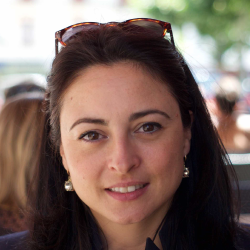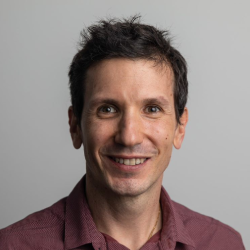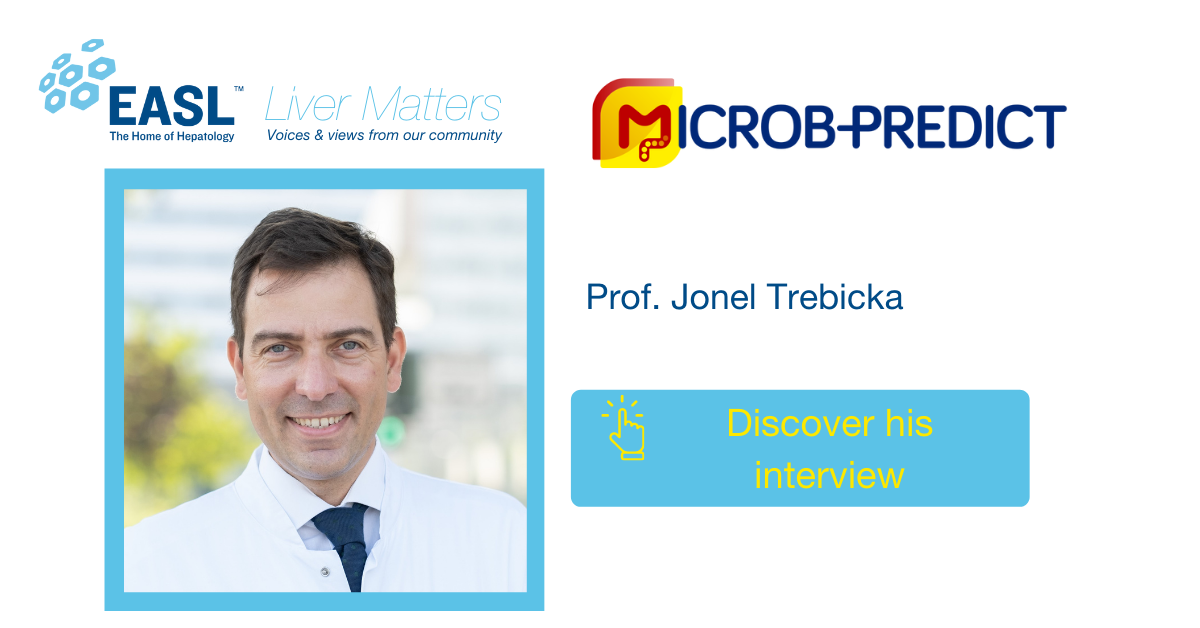The International Liver Congress, our flagship event, took place in London last month and drew more than 5,000 delegates all over the world, along with over 2,000 participants online. One of the highlights of the event was the addition of two new members to the EASL Scientific Committee: Prof. Ana Lleo And Prof. Eric Trépo.
They agreed to answer our questions and told us a bit about their work, their relationship with the EASL, how they hope to contribute to the Scientific Community. Keep on reading to get to know them better.
As a member of the EASL Scientific Committee, how will you serve the Home of Hepatology?
I feel that it is too early to say… I see EASL’s Scientific Committee as a team effort and I am willing to help in any way that the Committee sees best.
Nevertheless, some of the issues that are close to my heart are: Promoting and expanding basic and translational science in Hepatology; multidisciplinary collaboration; hands-on educational opportunities; and involvement of young investigators, patients’ associations, and nurses.
What was your highlight of the ILC 2022?
Networking and learning. Being able to meet colleagues face-to-face, discuss the abstracts presented, and interact with other researchers are just some of the best things that make ILC unique.
What is your current research about?
My studies deal mainly with the clinical and aetiopathogenetic aspects of biliary disorders, with particular focus on cholangiocyte biology and innate liver immune response.
Our efforts are aimed at translating knowledge from bench to bedside. Our ultimate goal is to identify prognostic predictors and molecular targets, and to facilitate their implementation into the clinical management of patients.
What do you expect to be the next breakthrough in Hepatology?
I believe we are approaching a new era for rare liver diseases. We will probably be able to treat diseases that up until now could be only offered liver transplantation. I believe the large efforts to build collaborative networks in rare liver diseases during the last few decades is paying off.
A fun fact about you
I love the mountains—skiing during winter and hiking in the summertime are my favorite outdoor activities. I also love music, but I am completely tone-deaf!
My mentors were long-term EASL members and I have always considered it an honour to be part of the Scientific Committee of EASL.
[The] final goal [of my research] is to identify prognostic predictors and molecular targets, and to facilitate their implementation into the clinical management of patients.
We will probably be able to treat diseases that up until now could be only offered liver transplantation
Nothing can replace face-to-face interactions, especially when starting new projects and developing novel ideas.
My current projects focus on the susceptibility to severe alcohol-related liver disease (ALD) and nonalcoholic fatty liver disease (NAFLD), including hepatocellular cancer, using genome-wide association studies and single-cell genomics.
[Regarding the next breakthrough in hepatology] I would say the generation, widespread sharing, and effective use of genomic and health data.
When and why did you join EASL?
I joined EASL in 2009, soon after the International Liver Congress in Copenhagen, where I presented my first poster at an international meeting.
I was a resident in Internal Medicine and a first-year PhD student at the time and I remember that someone visited my poster and started to ask me questions that I could not answer. Nevertheless, it turned out to be a very fruitful and friendly discussion that I still remember very well. Later, I would realize that that person was Dominique Valla, one of the most well-known minds in liver science.
This ILC meeting gave me a glimpse of what EASL could offer: The opportunity to join an international community where I could meet, discuss and learn from top-notch researchers in Hepatology.
Then I discovered EASL’s fantastic educational program through their website. I attended my first EASL school in Lausanne in 2010 and the Masterclass in Bordeaux in 2014; both left me with beautiful memories. I also received a Dame Sheila Sherlock Postdoctoral Research Fellowship to start a postdoctoral fellowship in Paris.
These different programs offered by EASL boosted my career and helped me to broaden my scientific network. These opportunities also allowed me to meet other European young investigators—some of whom I’ve become great friends since—and learn from the best in the field.
What motivated you to join the EASL Scientific Committee?
Over the past ten years, I’ve organized liver disease events at the national level, first as a young researcher and then, more recently, as a senior investigator. I really enjoyed the experience.
I sincerely think that EASL provides the best scientific program in the field of liver disease, so I wanted to contribute and help organize all these terrific scientific events that are very important for young investigators, and even for more experienced scientists.
I was also keen to join a group that gathers expertise from different aspects of Hepatology, because I knew I would learn a lot not only from these various experts, but also from other GB members and the office, all of whom also strongly contribute to the success of EASL. So, when I saw that a position in the scientific committee was open, I was thrilled and decided to apply.
As a member of the EASL Scientific Committee, how will you serve the Home of Hepatology?
I will try my best to maintain the tradition of scientific excellence built by the Home of Hepatology. I will do this by first continuing the excellent work that the Scientific Committee has been done so far and make sure to protect what EASL has achieved. I will also be attentive to what other scientific societies are doing and discuss possibilities with other members of the Scientific Committee colleagues, so that we can come up with new initiatives that would create new opportunities to benefit our community.
What was your highlight of the ILC 2022?
There are several. First, of course, is the pleasure of seeing my friends and colleagues again. Nothing can replace face-to-face interactions, especially when starting new projects and developing novel ideas.
Then, I would say the meet-the-expert sessions. I found the ones that I attended—“Checkpoint inhibitor-induced immune-mediated hepatitis” and “How to treat cholestasis-associated itch?”—to be extremely good. The excellent the abstracts sessions were also very memorable. Finally, I thought the EASL studio was an innovative and exciting novel concept.
What is your current research about?
My research interests include statistical and bioinformatic methods to study genetic susceptibility to liver diseases. My current projects focus on the susceptibility to severe alcohol-related liver disease (ALD) and nonalcoholic fatty liver disease (NAFLD), including hepatocellular cancer, using genome-wide association studies and single-cell genomics. But as a physician-scientist, I am interested in all aspects of ALD and NAFLD.
What do you expect to be the next breakthrough in Hepatology?
Some are already here. There are now new molecules that allow us to treat NASH patients, especially those with advanced fibrosis. There are also the novel anti-viral therapies that can help us cure hepatitis B in, hopefully, the next five years.
Looking farther ahead, I would say the generation, widespread sharing, and effective use of genomic and health data. This will support the development of precision medicine approaches and direct clinical decision-making in Hepatology.
A fun fact about you
My favorite leisure time activity is fencing, which I’ve been doing for more than 30 years. It is a physically demanding sport that requires maximum concentration and patience. It also develops self-assurance and discipline. Fencing is a great way to loosen up; I recommend it to anyone!







Comments (0)